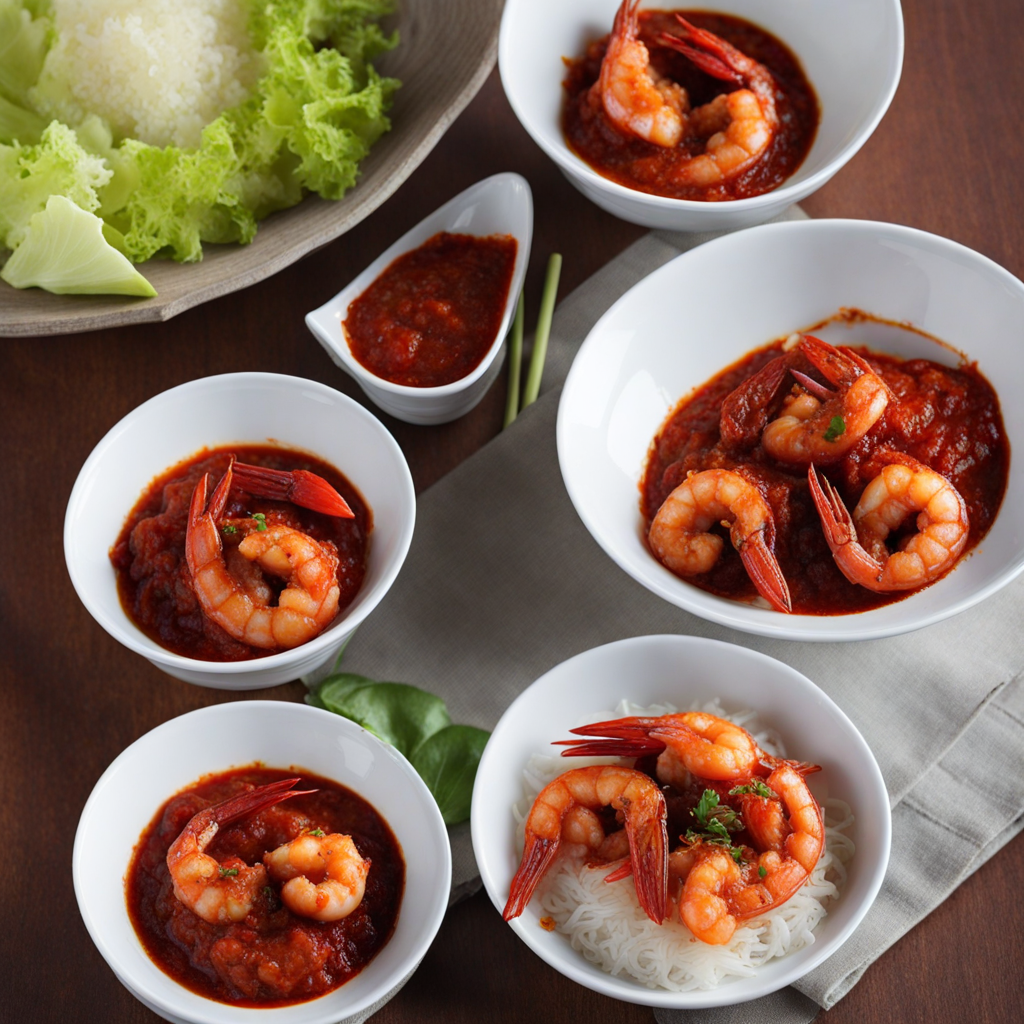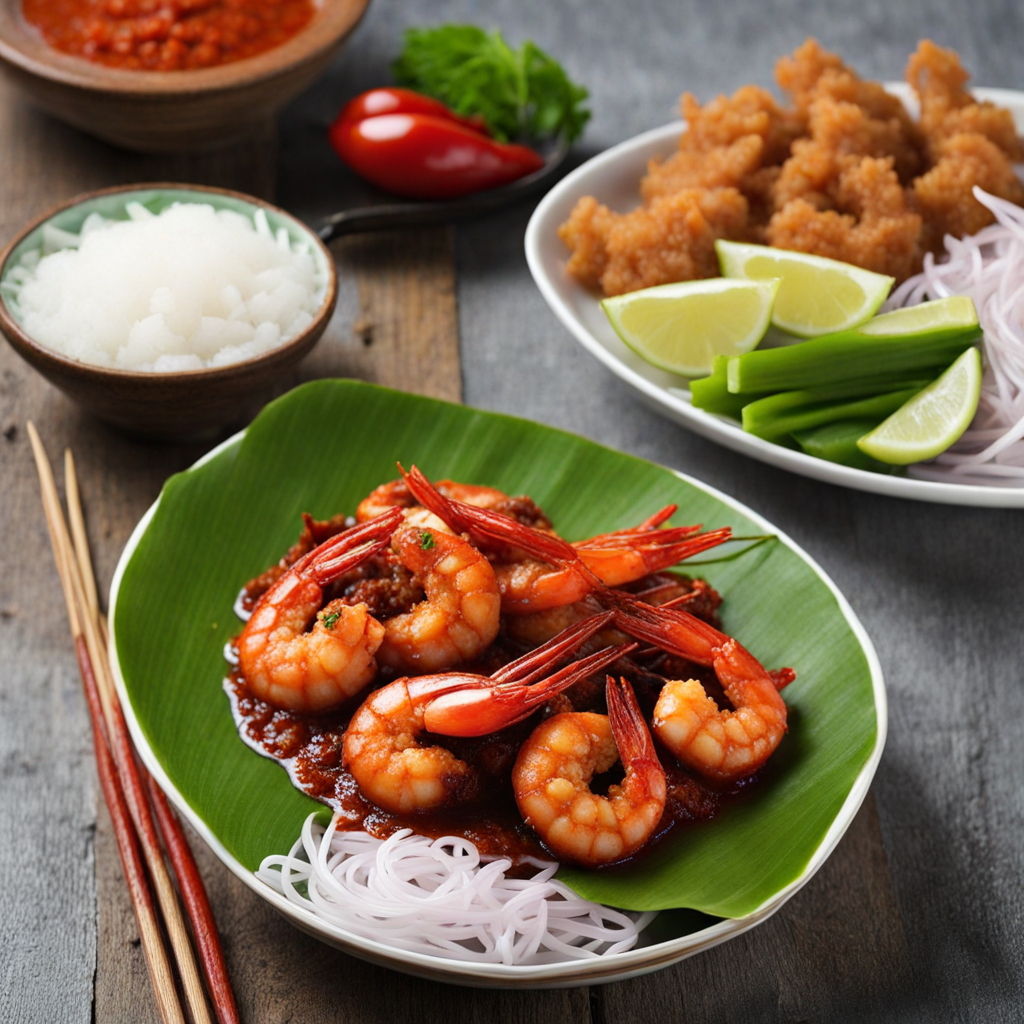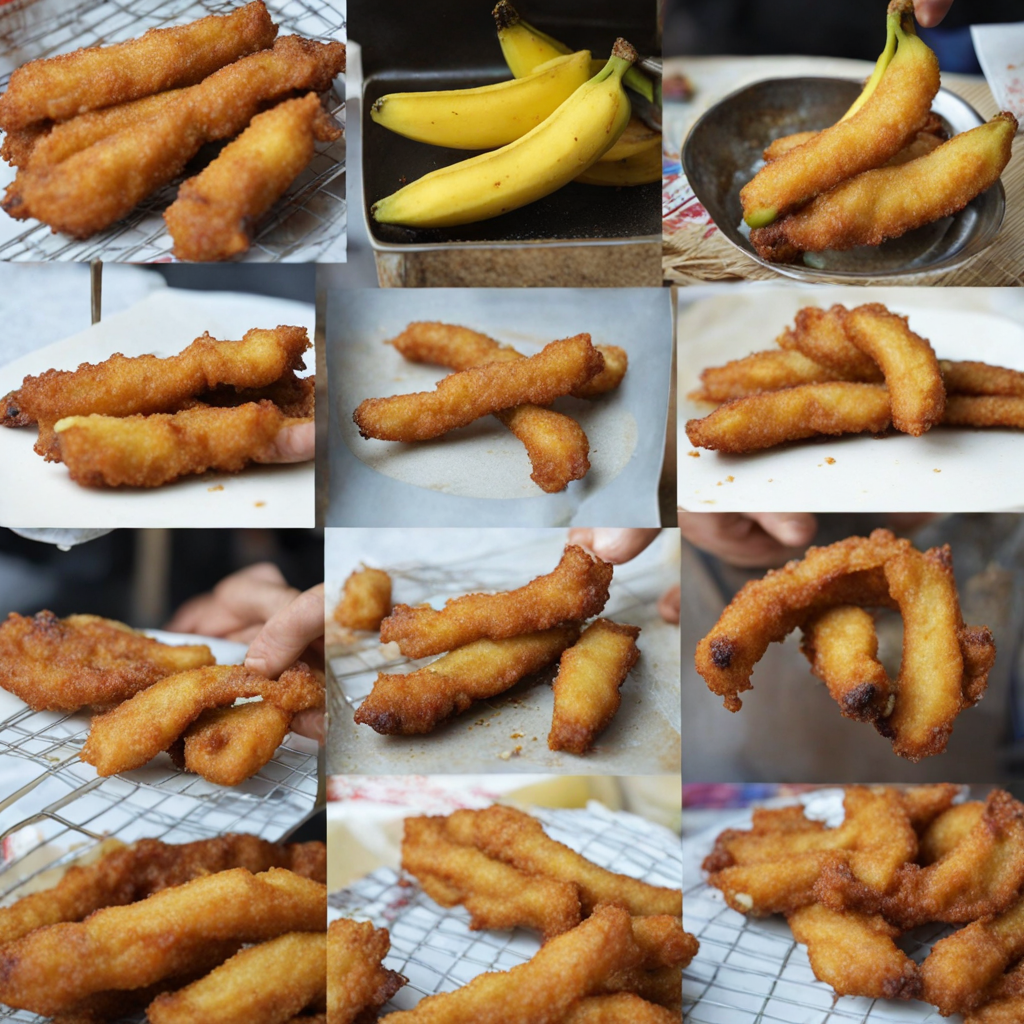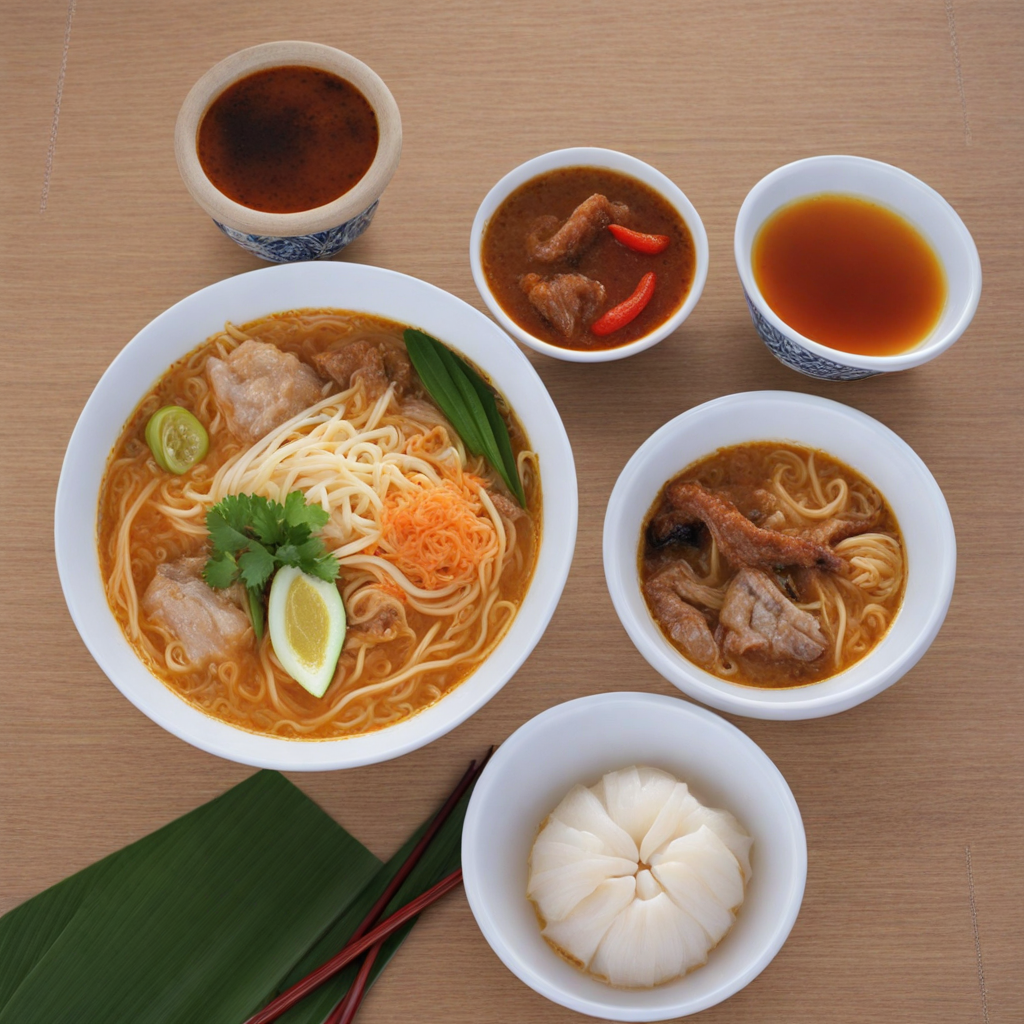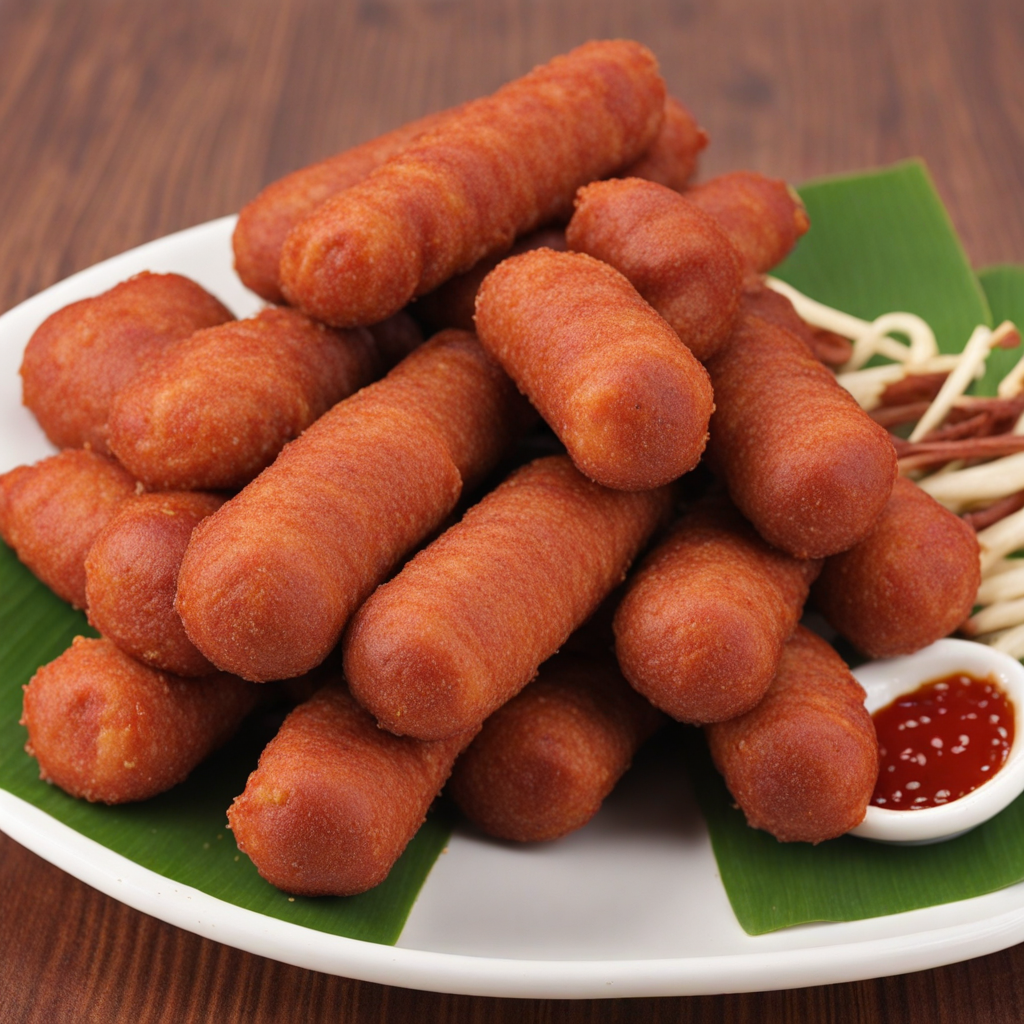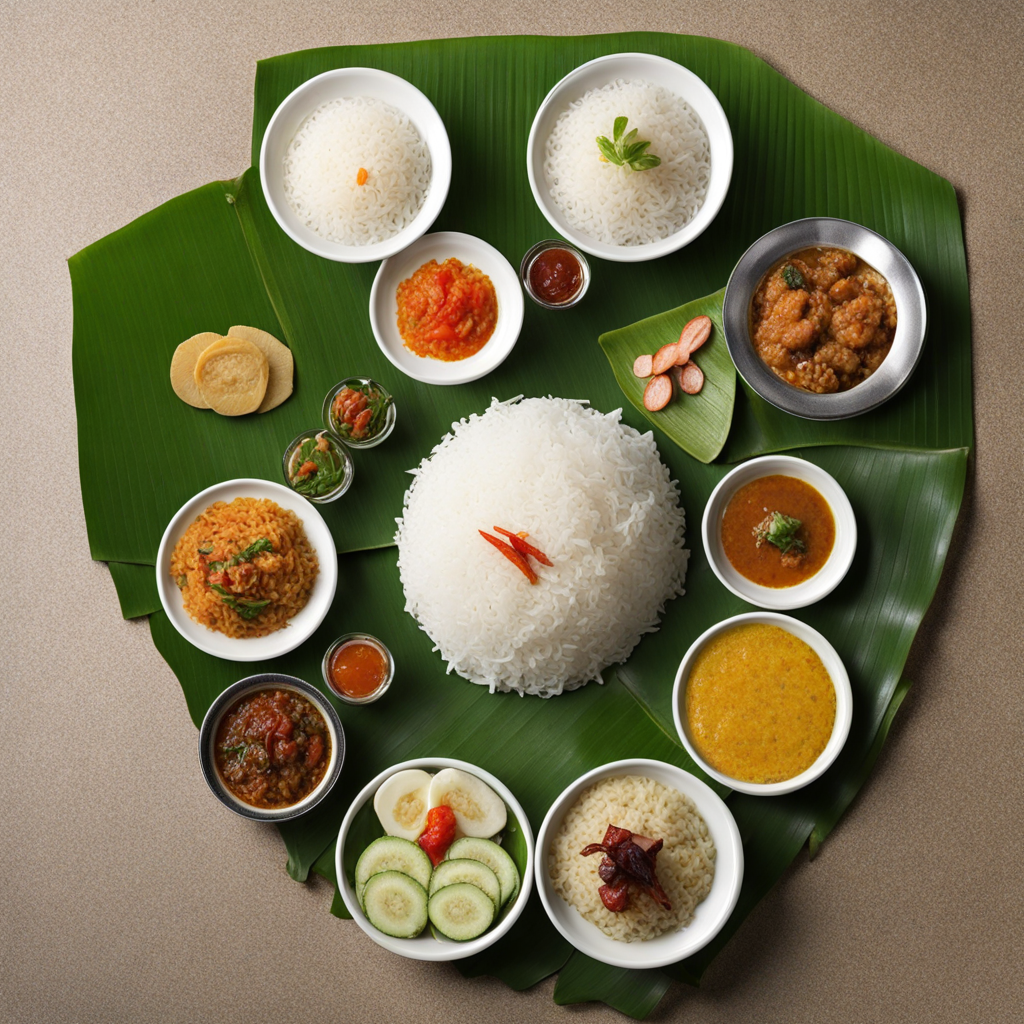Sambal Udang
Sambal Udang is a vibrant Malaysian dish that showcases the rich flavors of the country's culinary heritage. This dish primarily features succulent prawns cooked in a spicy sambal sauce, which is a signature condiment in Malaysian cuisine. The sambal sauce is a harmonious blend of fresh ingredients such as red chilies, garlic, shallots, and tamarind, creating a tantalizing heat that is balanced by a slight tanginess. The prawns, marinated and stir-fried in this spicy mixture, absorb the bold flavors, making each bite a delightful explosion of taste that embodies the essence of Malaysian cooking. What sets Sambal Udang apart is not just the heat, but the depth of flavor that comes from the careful preparation of the sambal itself. Fresh ingredients are ground into a paste, often enhanced with the addition of belacan (fermented shrimp paste) which adds an umami richness. This dish is typically served with steamed rice, allowing the fragrant sambal to be soaked up, providing a perfect counterbalance to the spiciness of the prawns. The vibrant red color of the sambal, speckled with bits of prawns, makes it an eye-catching centerpiece on any dining table. Enjoying Sambal Udang is a sensory experience; the aroma wafts through the air, enticing your taste buds even before the first bite. The combination of textures—the tender, juicy prawns and the slightly thick sambal sauce—creates a satisfying mouthfeel. Whether enjoyed as a main course or part of a larger meal, Sambal Udang is not just a dish; it is a celebration of flavors that invites you to explore the spicy, savory world of Malaysian cuisine.
How It Became This Dish
The Fascinating History of سمبل اودڠ (Sambal Oelek) in Malaysian Cuisine #### Origins and Etymology Sambal Oelek, known in Malaysia and various parts of Southeast Asia for its fiery zest, has a culinary heritage that dates back centuries. The term ‘sambal’ is derived from the Javanese word ‘sambel,’ and it broadly refers to a variety of spicy condiments made primarily from chili peppers. The word ‘oelek’ comes from the Malay term 'ulek', which means to grind or pound, signifying that this condiment is traditionally made by crushing ingredients together, typically using a mortar and pestle. The roots of sambal can be traced to the indigenous cultures of the Malay Archipelago, particularly among the Malay, Javanese, and other ethnic groups. The original sambals likely emerged as a means to enhance the flavors of various dishes, utilizing locally available ingredients. Chili peppers, which were introduced to Southeast Asia from the Americas in the 16th century, became a crucial component of sambal, transforming the condiment into a staple in many Southeast Asian cuisines. #### Cultural Significance Sambal Oelek holds a significant place in Malaysian culinary culture, serving as a symbol of the country's rich culinary heritage and diverse ethnic influences. In Malaysia, where multiple ethnic groups, including Malays, Chinese, Indians, and indigenous peoples, coexist, sambal transcends mere condiment status; it represents the fusion of flavors and cooking techniques that characterize Malaysian cuisine. The importance of sambal is often reflected in its presence at meals, where it is served alongside rice, grilled meats, and a variety of vegetables. It acts not only as a flavor enhancer but also as a bridge between different culinary traditions. Every community has its version of sambal, leading to regional variations that reflect local tastes and ingredient availability. In Malaysian households, sambal is often homemade, with families passing down their secret recipes through generations. This familial connection to sambal making fosters a sense of identity and continuity, tying individuals to their cultural heritage. It is not uncommon for sambal to be an essential part of celebrations and gatherings, further solidifying its role in social and communal life. #### Development Over Time The evolution of sambal Oelek in Malaysia is reflective of broader regional changes in culinary practices and globalization. Traditionally, sambal Oelek was made using a mortar and pestle, a labor-intensive process that required skill and patience. The basic ingredients typically included fresh red chilies, salt, and sometimes vinegar or lime juice. The grinding process released essential oils and flavors from the chilies, creating a vibrant, fresh condiment. As Malaysia modernized and embraced technological advancements in the late 20th and early 21st centuries, the production of sambal Oelek began to shift. Commercially produced versions emerged, making sambal more accessible to a wider audience. These store-bought sambals often contain preservatives, sugar, and other additives to enhance shelf life and flavor, thus catering to contemporary consumer preferences. Despite the convenience of commercially produced sambal Oelek, many Malaysians continue to favor homemade versions for their superior taste and authenticity. The rise of food blogs and social media has further popularized traditional sambal recipes, allowing home cooks to share their variations and techniques with a global audience. This digital sharing of culinary knowledge has led to a renaissance of interest in traditional Malaysian cooking, with sambal Oelek at the forefront. In recent years, there has also been a growing trend toward artisanal and organic sambal production. Small-scale producers are focusing on high-quality, locally sourced ingredients, emphasizing traditional methods of preparation. This movement reflects a broader global interest in sustainable and authentic food practices, as consumers become more conscious of what they eat and where it comes from. #### Regional Variations While sambal Oelek is a beloved condiment throughout Malaysia, regional variations exist, showcasing the country's diverse culinary landscape. For example, in Penang, known for its vibrant food scene, sambal Oelek may include ingredients like shrimp paste (belacan) or lime juice, adding depth and complexity to the flavor profile. In contrast, sambal from the Malay heartland may emphasize a more straightforward combination of chilies and salt, highlighting the natural heat of the peppers. In addition to regional differences, sambal Oelek is often paired with specific dishes, further enhancing its cultural significance. For instance, it is commonly served with grilled fish or chicken, providing a spicy contrast to the smoky flavors of the grilled meats. It can also be used as a dipping sauce for fresh vegetables or fried snacks, making it a versatile addition to many meals. #### Conclusion Sambal Oelek is more than just a spicy condiment; it is a cultural artifact that embodies the history, traditions, and culinary practices of Malaysia. From its humble beginnings as a simple mixture of ground chilies to its status as a beloved staple in Malaysian cuisine, sambal Oelek has undergone significant evolution while retaining its core identity. As globalization continues to influence food practices, sambal Oelek stands as a testament to the importance of preserving culinary heritage. Whether enjoyed in a bustling hawker stall or a family kitchen, sambal Oelek will likely remain a cherished part of Malaysia's culinary narrative for generations to come. Its ability to adapt and thrive in changing times speaks to the resilience of cultural traditions and the unifying power of food.
You may like
Discover local flavors from Malaysia


